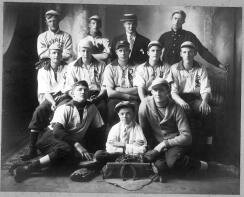Baseball in Scott County is a tradition; nearly every town has or had a small town baseball team. Shakopee, Jordan, and New Prague all pride themselves on not only their teams, but the parks in which they play. Ross Bernstein is quoted as saying that “In small-town America, being on a team was like being royalty”. Some of the names of players like Joe Schleper and John Breimhorst became household names.
Baseball in the County goes back as early as 1898, and even earlier by some other accounts. By the turn of the century the weekly game’s score were reported in every newspaper, and fans flocked to the stands. City built massive parks and competed to have the best facilities. Baseball in the towns of the county remained a main stay until the 1960s, when attentions turned toward more professional teams. The growth of major teams, the money they could spend, and possibly the rise of highways began to see small town ball die out in many towns.
Today, many towns still have teams, and they compete in statewide amateur leagues. The history of baseball in Scott County is as much a part of this county as anything. While the history cannot be covered in one blog post, a much more expansive history can be found in our current exhibit, Play Ball: Sports in Scott County. The museum will be closing December 1st, and so will this exhibit, so be sure to come in before it closes and learn more about the celebrity players, ball parks, and general stories of sports in Scott County.
Written by Dave Nichols, Curator




























